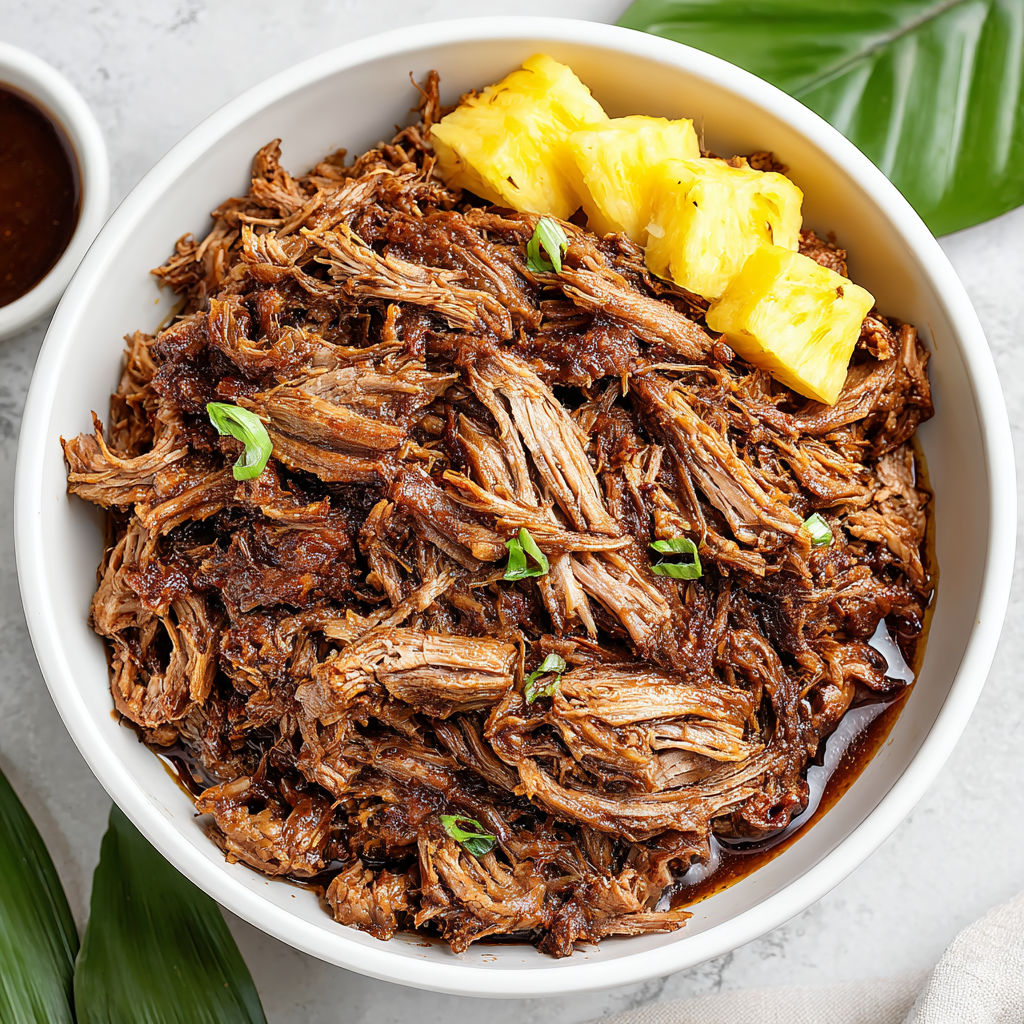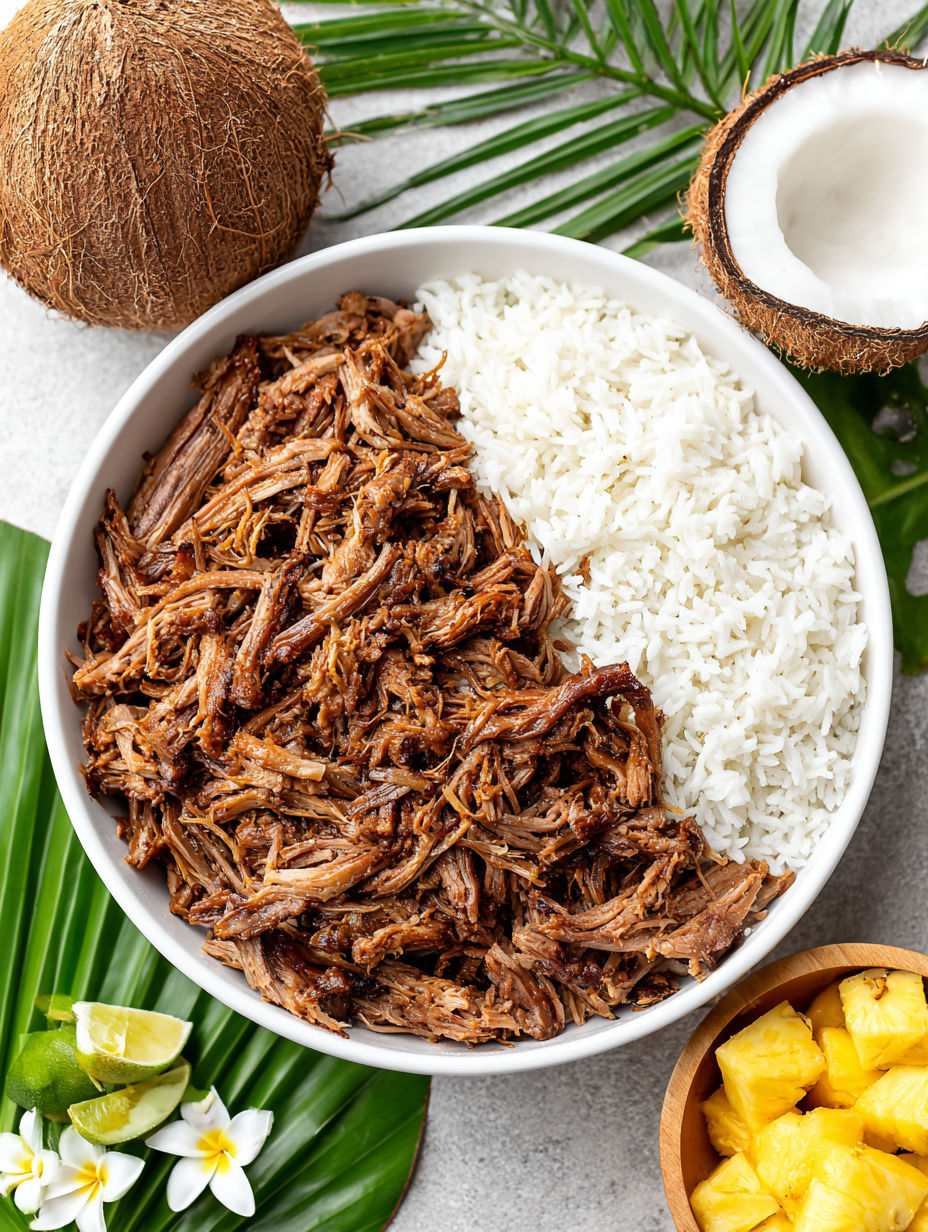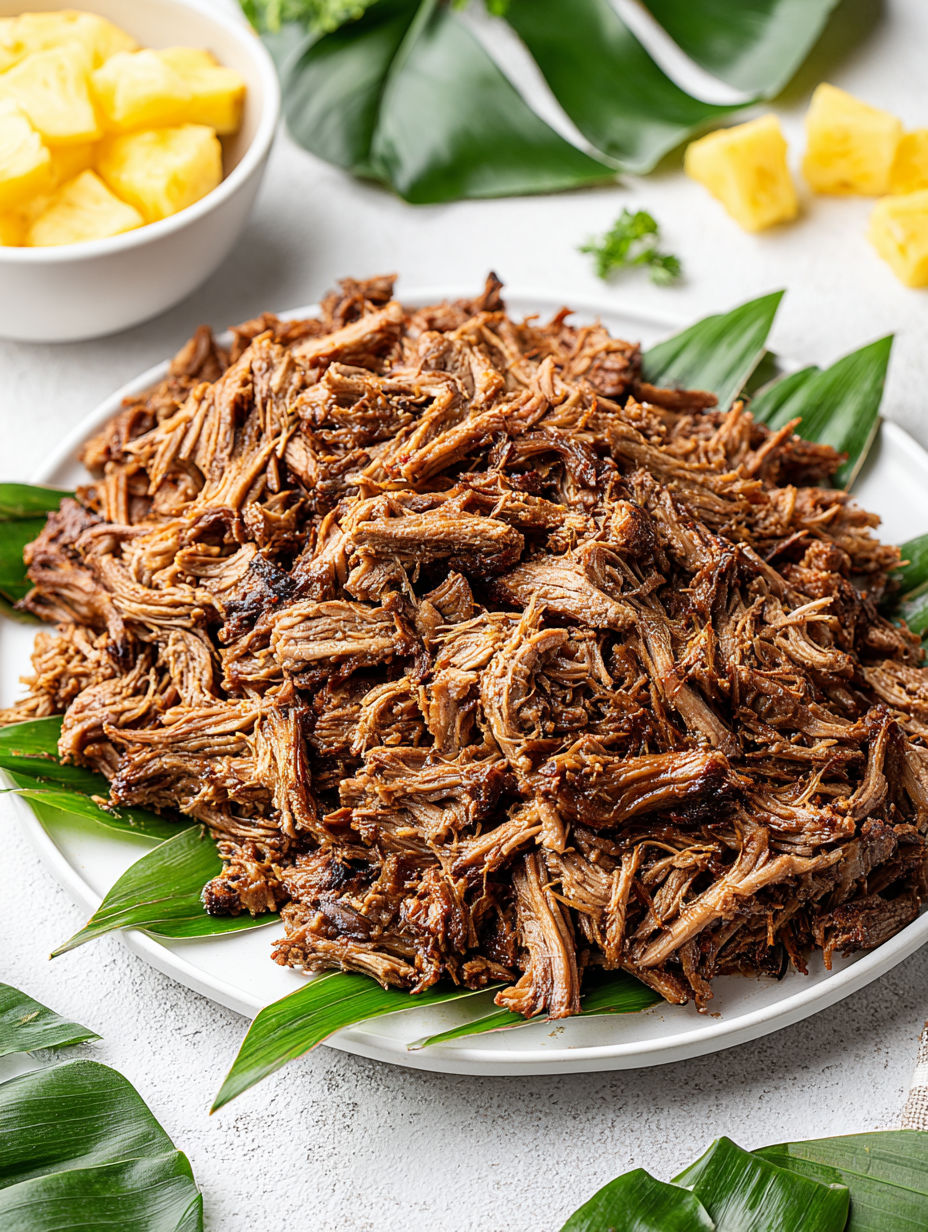 Pin to Save
Pin to Save
This slow cooker kalua pork brings the authentic Hawaiian flavors right to your home without the need for a traditional imu pit. With just a handful of ingredients including a flavorful pork shoulder, red Hawaiian sea salt, and a touch of liquid smoke, this recipe fills your kitchen with a mouthwatering aroma while the slow cooker does all the work. It's a perfect dish for gatherings or when you want to enjoy a taste of the islands with minimal effort.
I first made this for a family reunion and the pork disappeared so fast that everyone asked for the recipe. Now it's our go to for any Hawaiian themed party or a comforting weekend meal.
Ingredients
- Pork shoulder butt roast: 4 to 5 pounds boneless pork shoulder butt roast, chosen for its perfect balance of fat and meat, essential for tender and flavorful results
- Alaea salt: One to one and a half tablespoons of Alaea salt, the traditional red Hawaiian sea salt infused with volcanic clay that lends an earthy undertone and authentic island taste
- Pineapple juice: One cup unsweetened pineapple juice to keep the pork moist and add a subtle natural sweetness that complements the smokiness
- Garlic cloves: Four smashed garlic cloves to infuse aromatic layers of flavor deep inside the meat
- Liquid smoke: One tablespoon hickory liquid smoke, or mesquite for a slightly different smoky character, vital for mimicking the traditional cooking method's flavor
- Banana leaves: One or two banana leaves, optional, which introduce a delicate grassy fragrance and elevate the presentation beautifully choose fresh or frozen leaves from an Asian or Latin market
Instructions
- Prepare the Pork:
- Trim any excessive fat but leave enough to keep the pork moist during cooking. Pat the meat dry with paper towels to help the seasoning stick. Using a paring knife, poke small slits all over the roast and insert the smashed garlic cloves for a deeper aroma that seeps throughout.
- Season with Salt and Liquid Smoke:
- Rub the pork thoroughly with the red Hawaiian sea salt, making sure to work it into the slits so every bite is infused. Drizzle liquid smoke evenly over the surface, creating that unmistakable smoky island flavor that defines kalua pork.
- Layer Banana Leaves Optional:
- If you have banana leaves, line the bottom and partly the sides of the slow cooker to impart a delicate earthy aroma reminiscent of the traditional underground imu method. Place any extra leaves on top of the pork for added fragrance and a stunning presentation.
- Add Pineapple Juice and Assemble:
- Pour the pineapple juice gently around the pork rather than directly over it to avoid washing away the seasoning. Place the pork into the slow cooker and cover tightly, tucking in the banana leaves if using.
- Slow Cook Until Tender:
- Cook the pork on low temperature for 16 to 20 hours or on high for eight to ten hours. Low and slow cooking will break down connective tissues and deliver melt in your mouth tenderness. Your kitchen will begin to fill with an intoxicating smoky, sweet aroma.
- Shred and Serve:
- Transfer the pork onto a cutting board and use two forks to shred the meat, discarding any large pieces of fat. Let the cooking liquid settle and skim off excess fat. Return the shredded pork to the juices so each bite stays moist and bursting with flavor. Serve warm alongside your favorite Hawaiian sides.

One of my favorite parts about this recipe is the aroma the banana leaves bring. When I first made kalua pork using banana leaves, the scent instantly transported me to a summer luau, full of laughter and music. It turns this simple slow cooker meal into a sensory experience, perfect for sharing with friends and family.
Storage Tips
After cooking, cool the pork completely before storing it in airtight containers. It will keep beautifully in the fridge for up to four days. For longer storage, freeze in portioned containers and thaw overnight in the fridge before reheating slowly to maintain moisture.
Ingredient Substitutions
If you cannot find authentic red Hawaiian sea salt, mix kosher salt with a pinch of pink Himalayan salt to mimic the mineral richness and mild earthiness while preserving flavor balance. Unsweetened apple juice is an acceptable substitute for pineapple juice, offering subtle sweetness and acidity with a slightly different fruit profile. In place of banana leaves, hydrated corn husks or parchment paper can wrap the pork to retain moisture and provide a mild aromatic hint.
Serving Suggestions
Kalua pork shines piled high over steamed white rice with a topping of quick pickled red cabbage or fresh pineapple salsa for a burst of brightness. Pair it with traditional Hawaiian macaroni salad and grilled pineapple rings to complete the island feast. Leftovers transform beautifully into savory sliders, tacos, or a hearty breakfast hash, keeping the aloha spirit all day long.

Enjoy this authentic tasting kalua pork with family and friends for a comforting island style meal. Leftovers reheat well and adapt to many dishes.
Common Questions About Recipes
- → Why didn’t my pork shred easily?
If the pork resists shredding, it likely needs additional slow cooking. Continue cooking low and slow until the meat pulls apart effortlessly, as the connective tissue may need more time to break down.
- → Can I skip using banana leaves?
Yes, banana leaves add aroma and a subtle floral note, but the dish remains flavorful without them. Corn husks or parchment paper are good alternatives to help retain moisture and add gentle fragrance.
- → Is liquid smoke necessary for this dish?
Liquid smoke provides essential smoky depth, especially when a traditional imu isn’t available. Using it in moderation safely mimics authentic smoky island flavors in home kitchens.
- → How do I avoid overly salty pork?
Measure salt carefully and taste after cooking before adding more. Red Hawaiian sea salt is milder than table salt. If too salty, balance with unsalted broth or a splash of pineapple juice.
- → What makes this dish gluten and lactose-free?
It uses natural ingredients like pork shoulder, sea salt, and pineapple juice without gluten- or dairy-containing additives, making it naturally suitable for gluten and lactose sensitivities.